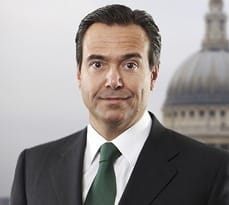He’s behind the turnaround in fortunes for Lloyds Banking Group, now partly owned by UK taxpayers, but what does Group Chief Executive António Horta-Osório really think went wrong? Here he tells us in his own words.

Banks in the past have lost sight of their basic function, which is to be focused on their customers. They became more lax in terms of risk and have not addressed the high cost prices that have built up over the years and over several acquisitions. That’s exactly what we’re trying to change at Lloyds.
The problem for Lloyds was that it lacked clear direction at the top, but fortunately it’s easier to address complex issues at the top and middle of an organisation than the bottom. And that’s what we did, by changing 80 per cent of the top 200 leaders at the bank in the first 18 months. It’s difficult to make decisions that impact on people’s lives, so you must do it in a fair way, and be meritocratic and transparent.
What attracted me to the job was the complexity of the task, and that’s the biggest challenge facing Lloyds. We have different and conflicting priorities and we have to manage the whole in such a way that the bank addresses those priorities. We are in the middle of a journey – and have made progress far quicker than we thought – but we are not complacent at all.
People will always think that you are communicating less than you should. We naturally like routine, so when you’re on a turnaround like ours, for instance, you have to communicate even more. I do lots of things as part of my job but my main role as a leader is to give people direction, tell them what the short-term targets are and highlight where progress has been made.
There are three personal lessons I’ve learned: success takes a relentless energy and drive in terms of leadership and communication; there are always factors beyond your control and so you have to accept that you can’t control everything and be ready to adapt your strategy; and it’s important to create the best teams by attracting the best talent. Having the best team is, in my opinion, the really big competitive advantage that the bank can create as a serious company for the sustainable future.
Our aim is to create cost-savings that we can share with the customers and therefore offer them better value for money, which is what any other company does in any other sector. The main aim of a commercial retail bank should be to provide better value for money for its customers, and we are doing that by simplifying the bank and relentlessly driving the costs down.
Lloyds was a great bank 20 years ago and then made an acquisition that did not turn out so well, as everyone knows. But the people who are in contact with our customers are great people. Great brands over time attract great talent, and the people that we have here at Lloyds are even better than I thought.
I believe business schools have a huge role in fostering people’s development in terms of leadership, strategy, seeing the bigger picture – all the things that people do not necessarily learn while they are working. I think people should differentiate between the technical career and the management career, and I strongly believe that to lead a bank, or any other organisation, you need to have management skills and management competencies.
I do not consider myself a banker; even though I have worked in many areas of banking and have led banks in many countries, even though banking is my area of expertise and I know it in-depth, I still consider myself a manager who specialises in the banking sector.
This article is based directly on an interview with António Horta-Osório as part of Cambridge Judge Business School’s Online Knowledge Centre.

